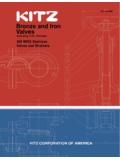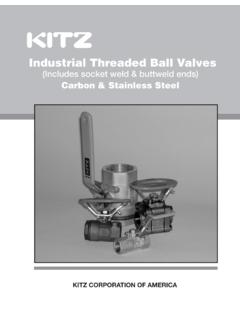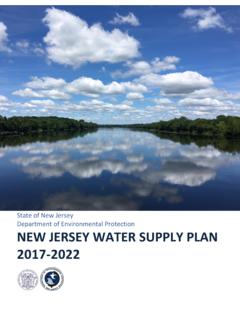Transcription of REVIEW OF STATE-OF-THE-ART WASTE-TO- ENERGY …
1 REVIEW OF STATE-OF-THE-ART waste -TO- ENERGY technologies Stage Two CASE STUDIES January 2013 Source: Martin GmbH Project number: 31427 Dated: January 2013 2 | 195 Revised: Quality Management Issue/revision Issue 1 Revision 1 Revision 2 Revision 3 Remarks Date 11th January 2013 Prepared by Steven Wood, Mick Fanning, Matt Venn, Kevin Whiting Signature Checked by Steven Wood Signature Authorised by Kevin Whiting Signature Project number 31427 Report number File reference 3 | 195 REVIEW OF STATE-OF-THE-ART waste -TO- ENERGY technologies January 2013 Client waste Management Branch Department of Environment and Conservation Level 7, The Atrium.
2 168 St George s Terrace PERTH WA 6000 AUSTRALIA Consultant Kevin Whiting Senior Technical Dirctor WSP House London WC2A 1AF UK Tel: +44 (0)20 7314 4647 Fax: +44 (0)20 7314 5111 Registered Address WSP Environmental Limited 01383511 WSP House, 70 Chancery Lane, London, WC2A 1AF WSP Contacts Dr Kevin Whiting Mick Fanning Mike Wilyman Project number: 31427 Dated: January 2013 4 | 195 Revised: Table of Contents Preamble .. 7 Overview of Thermal Treatment technologies .. 8 What is Incineration? .. 9 Moving Grate technologies .. 9 Fluidised Bed technologies .. 12 ENERGY Recovery Advanced Techniques to Boost Efficiency .. 15 Flue Gas Cleaning Systems.
3 18 Flue gas recirculation (FGR) .. 18 Particulate removal .. 18 Acid Gas Scrubbing 20 Heavy Metal and Dioxin/Furan Removal .. 22 De-NOx technologies .. 22 Availability and Reliability of waste Combustion Plants .. 24 Capex and Opex Indicators for waste Combustion Plants .. 24 Gasification technologies .. 27 Pyrolysis 30 Plasma Gasification technologies .. 32 Syngas Cleaning Requirements .. 34 Capex and Opex Indicators for Gasification and Pyrolysis Processes .. 37 List of Case Studies Included .. 38 Case Study 1 AEB, Amsterdam, The Netherlands .. 40 Overview .. 40 The Process .. 40 Plant Performance .. 48 Operability, Reliability and Availability.
4 50 Economics .. 50 Case Study 2 Lakeside, London, UK .. 51 Overview .. 51 The Process Flow .. 51 Plant Performance .. 54 Environmental Performance .. 54 Case Study 3 Spittelau, Vienna, Austria .. 59 Overview .. 59 The Process .. 60 Plant Performance .. 64 Environmental Performance .. 65 Operability, Reliability and Availability .. 68 Economics .. 68 Case Study 4 Allington, Kent, UK .. 70 Overview .. 70 The Process .. 71 Plant Performance .. 74 5 | 195 Operability, Reliability and Availability .. 77 Economics .. 77 Case Study 5 Issy les Moulineaux, Paris, 78 Overview .. 78 The Process .. 78 Plant Performance .. 80 Operability, Reliability and Availability.
5 83 Economics .. 83 Case Study 6 Reno Nord, Aalborg, Denmark .. 84 Overview .. 84 The Process .. 85 Plant Performance .. 91 Operability, Reliability and Availability .. 93 Economics .. 94 Case Study 7 Energos, Sarpsborg, Norway .. 95 Overview .. 95 The Process .. 95 Plant Performance .. 99 Operability, Reliability and Availability .. 101 Economics .. 101 Case Study 8 Zabalgarbi, Bilbao, Spain .. 102 Overview .. 102 The Process .. 102 Plant Performance .. 105 Operability, Reliability and Availability .. 107 Economics .. 108 Case Study 9 Brescia, Italy .. 109 Overview .. 109 The Process .. 110 Plant Performance .. 113 Operability, Reliability and Availability.
6 116 Economics .. 116 Case Study 10 Riverside, London, UK .. 117 Overview .. 117 The Process .. 118 Plant Performance .. 123 Operability, Reliability and Availability .. 126 Economics .. 127 Case Study 11 Mainz, Germany .. 128 Overview .. 128 The Process .. 130 Plant Performance .. 136 Operability, Reliability and Availability .. 138 Economics .. 139 Project number: 31427 Dated: January 2013 6 | 195 Revised: Case Study 12 Lahti II, 140 Overview .. 140 The Process .. 140 Plant Performance .. 142 Operability, Reliability and Availability .. 143 Economics .. 143 Case Study 13 Montgomery County, Maryland, USA .. 144 Overview .. 144 The Process.
7 145 Plant Performance .. 147 Operability, Reliability and Availability .. 150 Economics .. 151 Case Study 14 Japanese Slagging Gasification .. 152 Preamble .. 152 Overview .. 152 Nippon Steel .. 154 Kobelco .. 160 JFE .. 163 Hitachi Zosen .. 166 Ebara .. 167 Mitsui Engineering & Shipbuilding (MES) .. 170 Slag utilisation and re-use .. 173 Case Study 15 Current Status of Plasma Gasification .. 175 Preamble .. 175 Overview .. 175 Plasma Gasification .. 176 Leading technologies .. 178 Source: WSP analysis .. 181 Brief REVIEW of Each Technology .. 181 Advanced Plasma Power (APP) .. 181 AlterNRG .. 183 Environmental ENERGY Resources (EER) .. 186 Europlasma CHO-Power.
8 188 InEnTec / S4 ENERGY Solutions .. 189 Plasco ENERGY .. 191 Other technologies to Watch .. 194 Covanta ENERGY .. 194 Chinook Sciences .. 194 Outotec (formerly ENERGY products of Idaho [EPI]) .. 194 7 | 195 Preamble The utilisation of waste as a resource for the recovery of materials and ENERGY is becoming an increasingly attractive option for local and national governments worldwide. waste to ENERGY (WtE) can support the diversion from landfill of large volumes of residual municipal solid waste (MSW), that is waste which cannot be effectively recycled through materials recovery or recovered through biological treatment (such as composting).
9 In this way it can also contribute to meeting current and future obligations under relevant regulations, such as the EU Landfill Directive. waste to ENERGY also offers the significant potential to contribute to the mitigation of climate change, as part of Local and Regional Government ENERGY strategies and policies to meet CO2 reduction targets. Selection of the optimal WtE technology will require careful consideration of technical, environmental, regulatory and economic issues when evaluating life cycle costs and the impacts of WtE technologies . waste to ENERGY is the generic term given to a process by which the ENERGY stored in waste (chemical ENERGY ) is extracted in the form of electricity, heat and/or a fuel for use in a de-centralised ENERGY generation plant.
10 A number of technologies are commercially available and have been deployed, especially in countries such as the USA, Denmark, the Netherlands, Germany, Switzerland and the UK. These represent a number of fundamentally different technologies under two main groups: biological processing of biodegradable waste and thermal technology of residual waste , including direct combustion (incineration), Advanced Conversion technologies (ACT - gasification and pyrolysis) or recovery of secondary fuel for subsequent ENERGY recovery (SRF1 from MBT2 processes and biofuels from syngas produced by gasification processes). Maximising recycling and recovery from MSW3 and C&I4 waste will have both environmental and economic impacts on WtE technologies and considerable technological developments have been taking place within the WtE space to optimise the performance of STATE-OF-THE-ART facilities.







